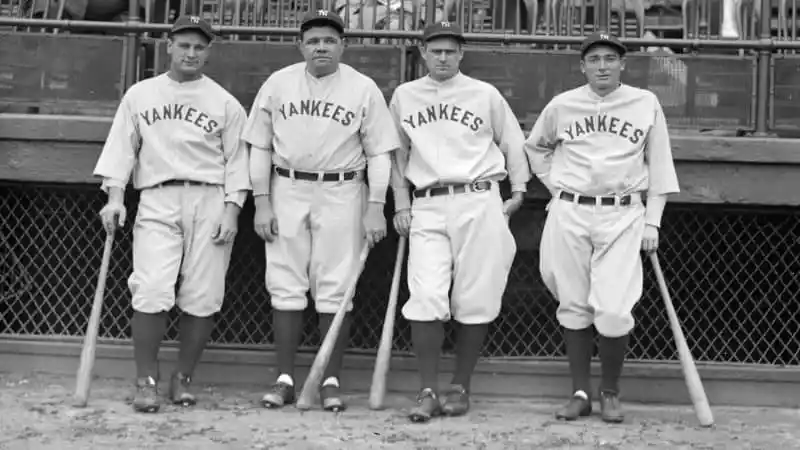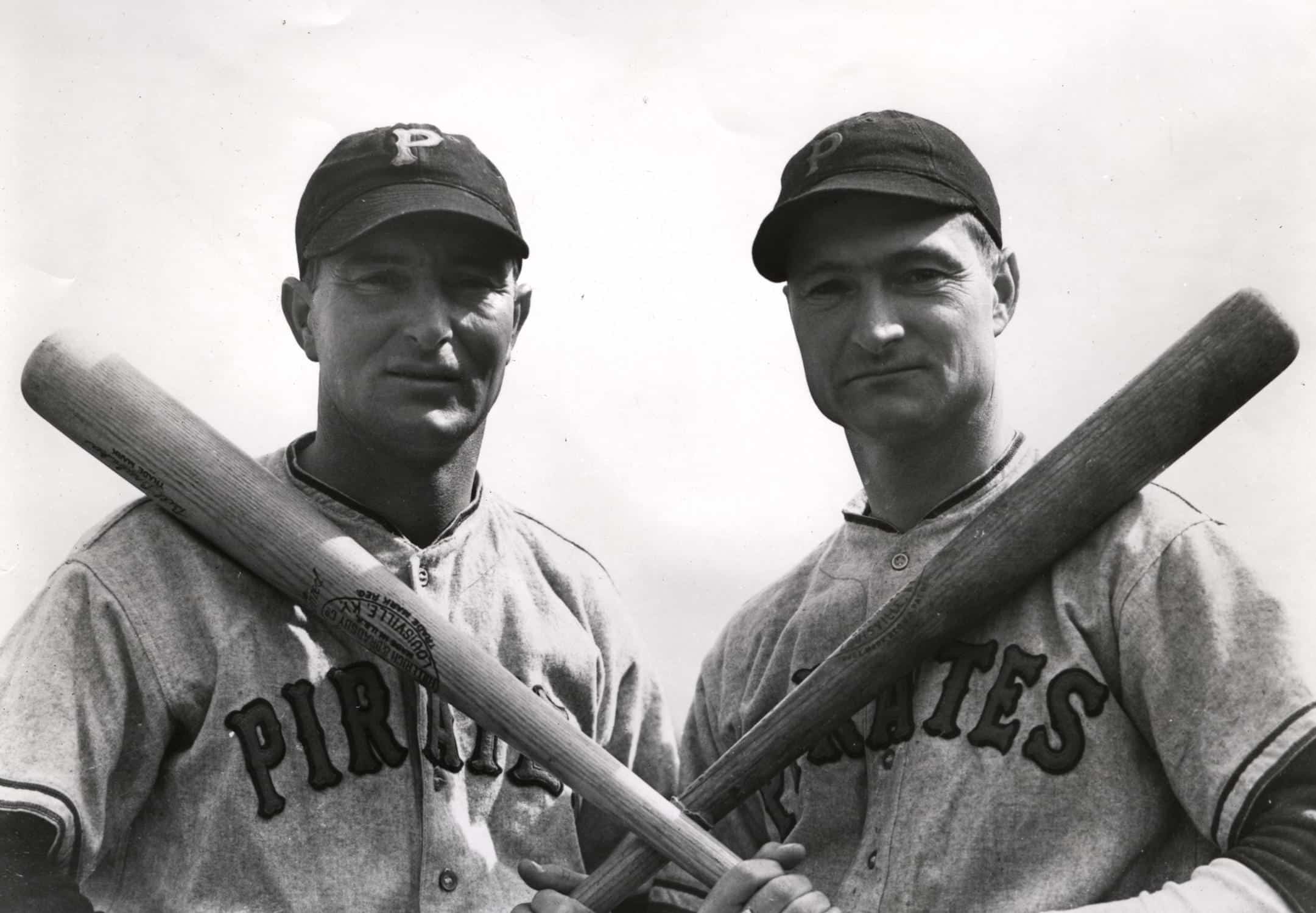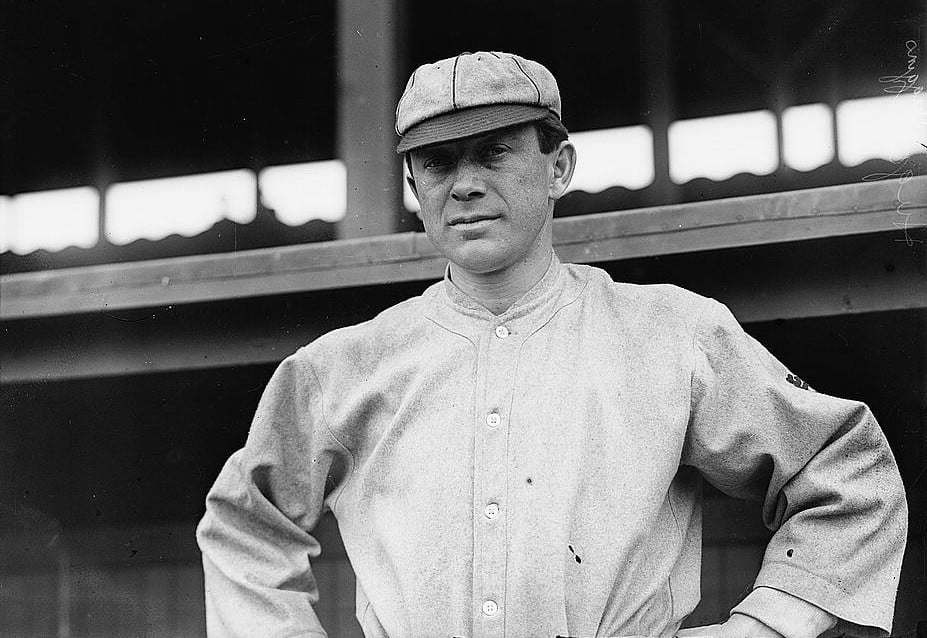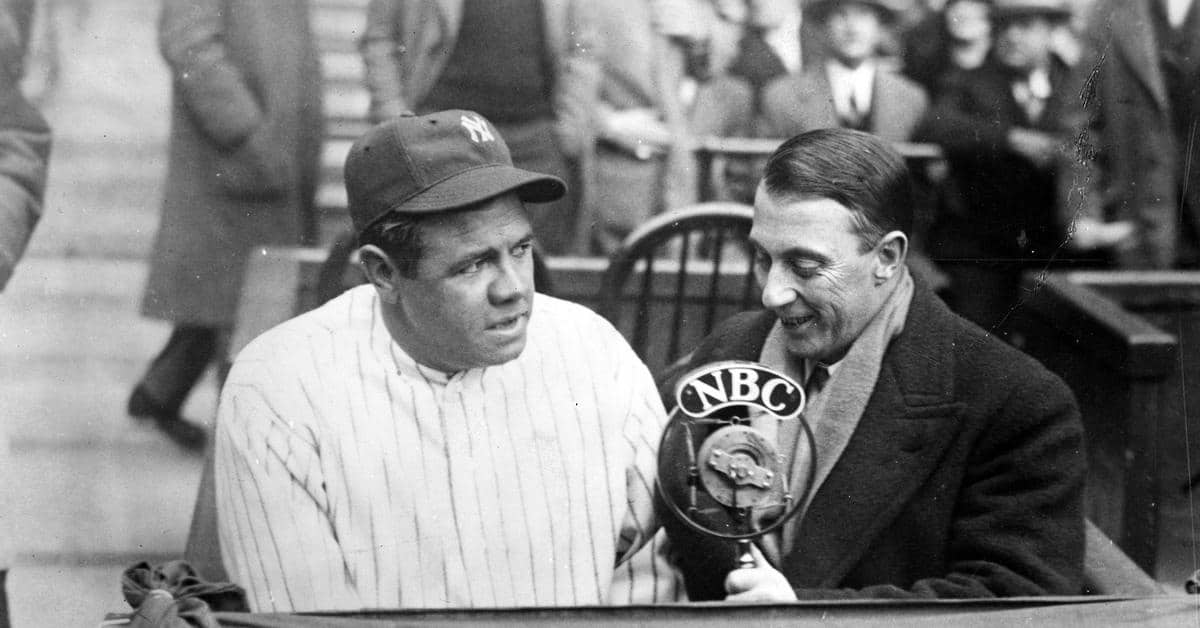
Jump to:
- #1. The First Sweep Of A National League Team
- #2. The First World Series Win For Murderers Row
- #3. Waner Brothers Played Well For Pittsburgh But Did Not Have The Influence Of Murderer's Row
- #4. The Pirates' Weakness Was Their Pitching
- #5. The Second World Series Victory For Miller Huggins
- #6. The First World Series was Broadcast On NBC And CBS Radio
- #7. The Series Ended On A Wild Pitch
#1. The First Sweep Of A National League Team
The 1927 World Series was the first sweep of a National League team since the World Series began. It would be the first of many for the Yankees.
The 1927 Yankees came into the World Series as one of the most feared lineups in baseball. They not only were great on offense, but they also had excellent pitching.
The Pirates had won the 1925 World Series and were looking to secure their 3rd title in club history. However, they would simply be overmatched.
#2. The First World Series Win For Murderers Row

The 1927 New York Yankees had perhaps the most feared lineup in the history of baseball.
Nicknamed "Murderers Row," their batting order boasted the all-time great Babe Ruth at the top of his considerable powers, hitting .356 with a then-record 60 home runs and 164 RBI that year.
He was complemented by future Hall of Famer Lou Gehrig at first base, who hit .373 with 47 home runs and a league-leading 175 RBI; Tony Lazzeri at second base, who drove in 102 runs with a .309 average, and center fielder Earle Combs, who hit .356 and scored 137 runs as the team's leadoff hitter.
Left fielder Bob Meusel also drove in over 100 runs with a .337 average.
Many of these guys did not participate in the 1923 World Series victory against the New York Giants.
#3. Waner Brothers Played Well For Pittsburgh But Did Not Have The Influence Of Murderer's Row

Paul and Loyd Waner had a great regular season and looked to continue that trend in the World Series. They both played well, with Paul batting .333 and Lloyd .400.
Despite their great stats, it did not translate to wins. The bats with the Yankees simply overwhelmed the pitching for the Pirates, and the Pirates' offense could not catch up.
The Waner brothers went on to have great careers, and both would make it to the Hall of Fame.
#4. The Pirates' Weakness Was Their Pitching
The 1927 Pittsburgh Pirates were by no means a weak team, but they certainly suffer in comparison with their American League rivals.
The Pirates went 94–60 for manager Donie Bush during the regular season, finishing 1+1⁄2 games ahead of the defending World Champions St. Louis Cardinals.
The Pirates' pitching was not as dominant.
Two veterans of the 1925 World Championship team, Lee Meadows and Ray Kremer, both posted 19 wins, with Kremer leading the league with a 2.47 ERA.
Carmen Hill had pitched part of six seasons in the majors before 1927, never winning more than three games.
In 1927, he put everything together, winning a team-leading 22 games against 11 losses, with a 3.24 ERA at age 31.
Vic Aldridge went 15–10 as the fourth starter, but his 4.25 ERA was well over the league average.
In the bullpen, Johnny Miljus put together a good season, posting a 1.90 ERA in 76 innings with an 8–3 record.
#5. The Second World Series Victory For Miller Huggins

After struggling in 1921 and 1922 to defeat the Giants, Huggins was able to secure a victory in 1923, which was the first victory in the World Series for the Yankees.
Huggins would go on to produce many winning seasons, but the World Series seemed always to evade him.
He would emerge as the best manager in 1927 until his untimely death in 1929. He would win 3 World Series and probably many more.
#6. The First World Series was Broadcast On NBC And CBS Radio

Up until 1927, the World Series had been broadcast on Westinghouse Broadcasting; however, in 1927, things shifted, and there would be a simulcast with NBC and CBS.
The two networks would share the broadcast until 1939, when Mutual took control of the World Series.
The two companies would compete for Major League Baseball games moving forward.
They would acquire exclusive rights to teams along with shared broadcasting for the All-Star Game.
#7. The Series Ended On A Wild Pitch

There was a new battery for the Pirates in the bottom of the seventh, Johnny Miljus and catcher Johnny Gooch.
The score remained tied through the seventh, the eighth, and the top of the ninth, bringing the Yanks up in their half of the ninth with a chance to win the game and the series.
Miljus opened with a walk to Combs. Koenig beat out a bunt down the third baseline for a single, bringing Ruth up.
Miljus' wild pitch sent Combs to third and Koenig to second, and manager Bush ordered Miljus to walk Ruth, loading the bases for Gehrig, who struck out swinging as did Meusel looking.
Lazzeri fouled deep into the left-field bleachers to strike one, but on the next pitch, Miljus uncorked another wild pitch.
Combs raced home with the winning run, and the Series was over with the Yankees winning 4–3.
To date, this is the only World Series to end with a runner scoring on a wild pitch
